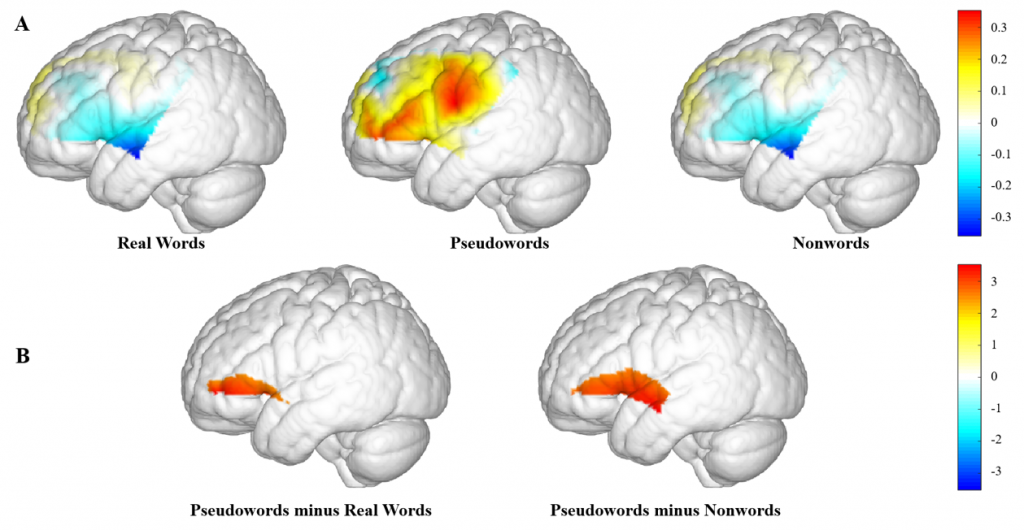



Pic. A to D: Fused electroencephalographic, and functional near infrared spectroscopy data acquisition
To reveal how words are encoded and constrained by the human brain, it is essential to identify the complex neuro-cognitive mechanism underlying morpho-semantic processing. Although the role of morphology in alphabetic language processing has been extensively studied, it is still unclear how morphology is enabled and constrained in morpho-syllabic languages like Chinese.
In a study published in Cortex (5 years IF: 5.1), a CCBS research team led by Prof. Zhen Yuan, revealed the neural signatures of Chinese morphological constraint encoding in the human brain.
This study aimed to inspect the time courses and patterns of brain activation associated with Chinese morphological constraint encoding. Chinese native speakers were recruited to perform visual lexical decisions, whilst behavioral, electroencephalographic, and functional near infrared spectroscopy data were simultaneously recorded. Both morphological and semantic effects were examined to reveal the corresponding spatio-temporal brain activation patterns based on multimodal data. Brain activation differences between pseudowords and real words indexed morphological sensitivity, whereas differences between real words or pseudowords and nonwords characterized semantic effects. Electrophysiological data showed that semantic processing occurred earlier (N400, 300-450 ms) than morphological processing (450-570 ms), while brain activation patterns revealed a differentiation between morphological parsing (specified in the left inferior frontal gyrus) and semantic analysis (in a broader fronto-temporal network). These findings offer new evidence that morphological constraints are encoded at a late stage of compound word processing in Chinese and suggest that the left prefrontal cortex plays an essential role in this process.
The study was led by Prof. Zhen Yuan and the main participant was Prof. Yuan’s PhD student Dr. Fei Gao. This work was jointly supported by the Macau Science and Technology Development Fund (Ref No.: FDCT 0020/2019/AMJ & FDCT 0011/2018/A1), Macao SAR Government Higher Education Fund (Ref No.: CP-UMAC-2020-01), Guangdong Provincial Fund (EF017/FHS-YZ/2021/GDSTCRSKTO), and RSKTO from the University of Macau.
Paper link: https://www.sciencedirect.com/science/article/abs/pii/S0010945222001642?via%3Dihub
Paper Information:
Gao, F., Wang, R., Armada-da-Silva, P., Wang, M. Y., Lv, H., Leong, C., & Yuan, Z. (2022). How the brain encodes morphological constraints during Chinese word reading: An EEG-fNIRS study. Cortex.

Brain activation patterns associated with three lexical conditions and pairwise comparisons.


